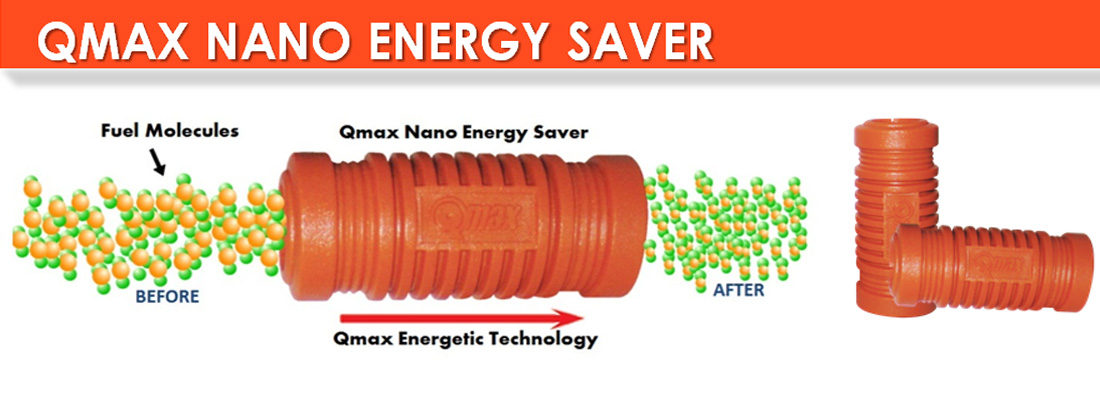QMAX LEVEL UP YOUR DRIVE(MENINGKATKAN KUASA KERETA ANDA)
“Qmax Nano Energy Saver going thought the gas pipe to break down fuel molecules by leading the molecules to resonate. Thus, it can improve combustion efficiency after fuel molecules entering into the engine and further enhances the vehicles horsepower and fuel efficiency.”

Qmax Nano Energy Saver [Qmax Nano Fuel] is the FIRST device with its infrared ray at 12 x 10 /Second that penetrate metal/rubber/fiber braces and break oil molecule thin disintegrate, bring forth low frequency resonate, resonate behind can bring forth anion, increase oxygen content, promotion fog melts effect. Thus the fuel can fully mix with air while entering into the engine cylinder, giving an enhancing performance of combustion, engine runs smooth, increase engine longevity. It is good for the environments because is can decrease the vehicle’s carbon monoxide 18% or more. It is a device of new invention using latest nanotechnology.
Qmax Nano Energy Saver [Qmax Nano Fuel] is highly compatible with various types of vehicles and even on buses and commercial vehicles. Its versatility also stretches to engine running on gas (LGP, CNG, NGV) and biofuel. This device can also improve the carburetors and fuel injectors by making it to work more effectively for more complete combustion. It also helps improve on low temperature working conditions while keeping the combustion chambers clean and fewer carbon deposits.
Why using Qmax Nano Energy Saver in my car?
Advantages (Qmax Nano Energy Saver – Fuel Management System)
What is difference between Qmax Nano Energy Saver compare to others?
Qmax Nano Energy Saver
E WARRANTY – 5 YEARS / 250,000km
Nano technology – far infra red device
Rubber material – will not interference with electronic or electrical system
Break fuel molecules into smaller
Almost complete combustion, more power, fuel saving and reduce carbon deposit
Works at high temperature (up to 105 °C)
Ordinary
WARRANTY ?
Magnet base [magnetic fields device
Interference with electronic or electrical circuit [distortion – magnetic fields]
Arrange fuel molecules orderly (fuel molecules size remain same)
Poor combustion, ordinary power, same fuel consumption and carbon deposit remains
Works at average temperature only (about 60 °C)